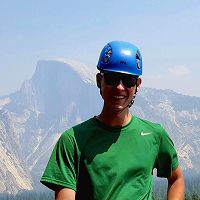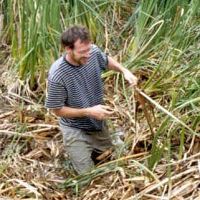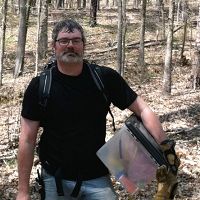Riebe et al., 2017
The influence of subsurface porosity and bedrock composition on ecosystem productivity and drought resilience in the Sierra Nevada Batholith, California
Riebe, C. S.; Callahan, R. P.; Goulden, M.; Pasquest, S.; Flinchum, B. A.; Taylor, N. J.;. Holbrook S. (2017)
Fall Meeting, American Geophysical Union, December 2017. Abstract EP53D-1762.
-
Sierra, INVESTIGATOR
-
Sierra, GRAD STUDENT
-
Sierra, INVESTIGATOR
-
Sierra, COLLABORATOR, GRAD STUDENT
-
Sierra, GRAD STUDENT
-
Boulder, Calhoun, Eel, Reynolds, Sierra, COLLABORATOR
Abstract
The availability of water and nutrients in soil and weathered rock influences the distribution of Earth’s terrestrial life and regulates ecosystem vulnerability to land use and climate change. We explored these relationships by combining geochemical and geophysical measurements at three mid-elevation sites in the Sierra Nevada, California. Forest cover correlates strongly with bedrock composition across the sites, implying strong lithologic control on the ecosystem. We evaluated two hypotheses about bedrock-ecosystem connections: 1) that bedrock composition influences vegetation by moderating plant-essential nutrient supply; and 2) that bedrock composition influences the degree of subsurface weathering, which influences vegetation by controlling subsurface water-storage capacity. To quantify subsurface water-holding capacity, we used seismic refraction surveys to infer gradients in P and S-wave velocity structure, which reveal variations in porosity when coupled together in a Hertz-Mindlin rock-physics model. We combined the geophysical data on porosity with bedrock bulk geochemistry measured in previous work to evaluate the influence of water-holding capacity and nutrient supply on ecosystem productivity, which we quantified using remote sensing. Our results show that more than 80% of the variance in ecosystem productivity can be explained by differences in bedrock phosphorus concentration and subsurface porosity, with phosphorus content being the dominant explanatory variable. This suggests that bedrock composition exerts a strong bottom-up control on ecosystem productivity through its influence on nutrient supply and weathering susceptibility, which in turn influences porosity. We show that vegetation vulnerability to drought stress and mortality can be explained in part by variations in subsurface water-holding capacity and rock-derived nutrient supply.
Citation
Riebe, C. S.; Callahan, R. P.; Goulden, M.; Pasquest, S.; Flinchum, B. A.; Taylor, N. J.;. Holbrook S. (2017): The influence of subsurface porosity and bedrock composition on ecosystem productivity and drought resilience in the Sierra Nevada Batholith, California . Fall Meeting, American Geophysical Union, December 2017. Abstract EP53D-1762..
Explore Further






